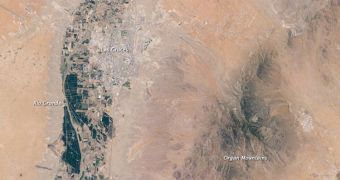The results of a new geological analysis indicate that a rift in the US southwest is currently stretching and expanding, therefore increasing the risk of a major earthquake occurring in the region. The interesting thing about this is that the area is not exactly known for being too geologically-active.
The structure is made up of several basins and smaller fault lines, and is collectively known as the Rio Grande Rift. Geologists say that it runs from New Mexico to central Colorado, in an area that was never hit by large earthquakes.
In the past, scientists were convinced that this particular rift was inactive, since no activity was ever recorded at the location. However, the new investigation was able to determine that the area is still expanding, albeit at a very small speed.
The study was only made possible by the use of state-of-the-art GPS technology, which enabled scientists to conduct very precise measurements of the distance between fixed points on either side of the rift structure, LiveScience reports.
The research was conducted because scientists grew suspicious during an unrelated analysis of how seismic waves were traveling through Earth's mantle beneath the location. Their propagation speed was found to be very low, and there are only a few explanations for such a reading.
First, it could be that the mantle is very hot at that location. The second option is that the continental crust plates above that location are slowly moving away from each other. The new investigation was able to determine that the latter scenario was the correct one.
“There's certainly potential for earthquakes in this region. They would be very low-probability events but, like all earthquakes, they could have large consequences if they do happen,” explains University of Colorado in Boulder (UCB) seismologist and study coauthor Anne Sheehan.
GPS investigations revealed that the Rio Grande Rift is coming apart at a rate of about 0.1 millimeters per year. “That's really pretty small. The rift is not dead, but it's not really thriving either,” Sheehan explains.
“We can't use this to say we expect to see a big earthquake anywhere in the region. But a more worrisome aspect is that we don't really expect earthquakes here, so our building codes aren't as strict as they are in, say, California,” she concludes.

 14 DAY TRIAL //
14 DAY TRIAL //